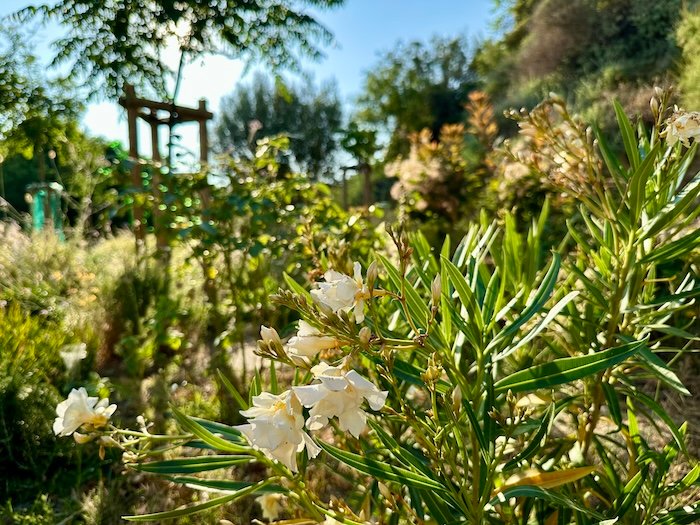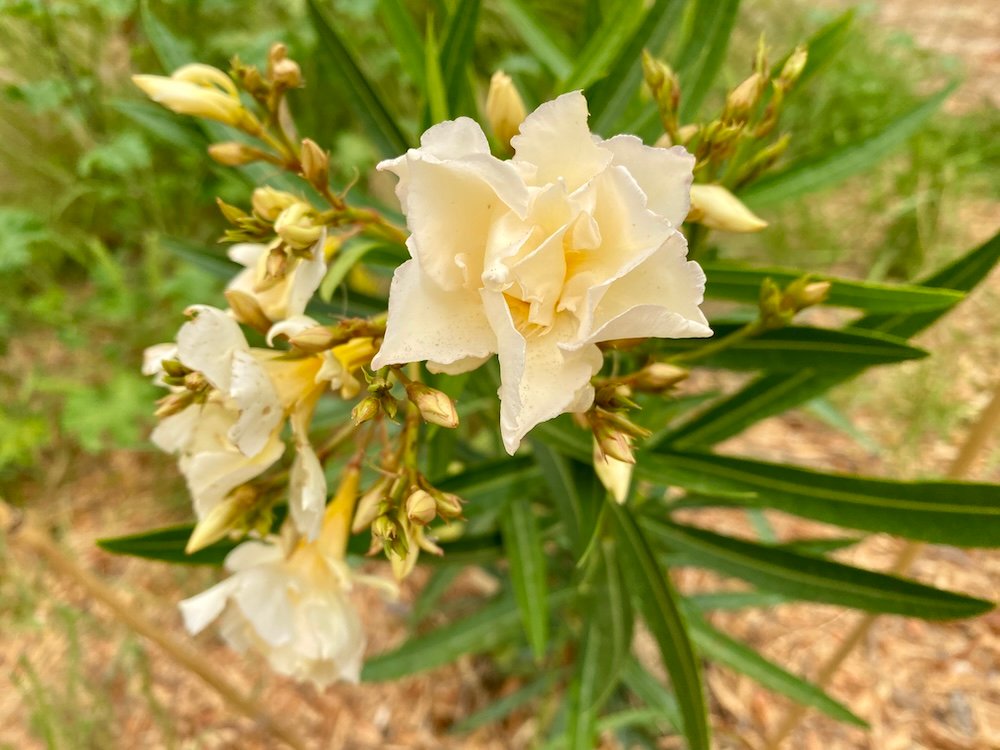Oleander is one of those plants that seems to grow in every Mediterranean garden and is also seen all along highways, roadsides, and public spaces in southern France.
It is native or naturalized in many warm regions from northwest Africa and the Mediterranean to the Black Sea, the Arabian Peninsula, southern Asia and even southern parts of China. It is even cultivated in warmer areas of Switzerland, southern and western Germany and England as well as North America.
In its natural habitat Nerium oleander grows in stream beds where it tolerates inundations as well as long droughts. It is a very robust plant for warm climates that doesn’t mind poor soil, cold wind, hot sun, salt spray, drought in summer, wet feet in winter… Its only weakness is its limited frost resistance. Hardy and/or well-established varieties can withstand occasional frost down to −10°C or more but leaves may be damaged. It is generally good to surround the foot of the plant with compost and a good layer of dead leaves for the winter.
Although Nerium oleander is drought resistant it does appreciate regular watering during its first two summers and generally for vigorous growth and flowering.
Most oleanders flower between June and September and most prolifically in June and July. Their adult size can be anywhere from 1-4 meters in height and 1-3 meters in width, depending on variety.
In my garden I have planted the variety “Luteum Plenum” because it was advertised for its filled, scented flowers. The perfume is very slight however and I do hope I won’t regret choosing this variety because of its rather limited frost hardiness. So far so good: this year’s January frost of −4°C on several early mornings did not bother it at all.
Important note: Nerium oleander is very toxic in all its parts.


Leave a Reply